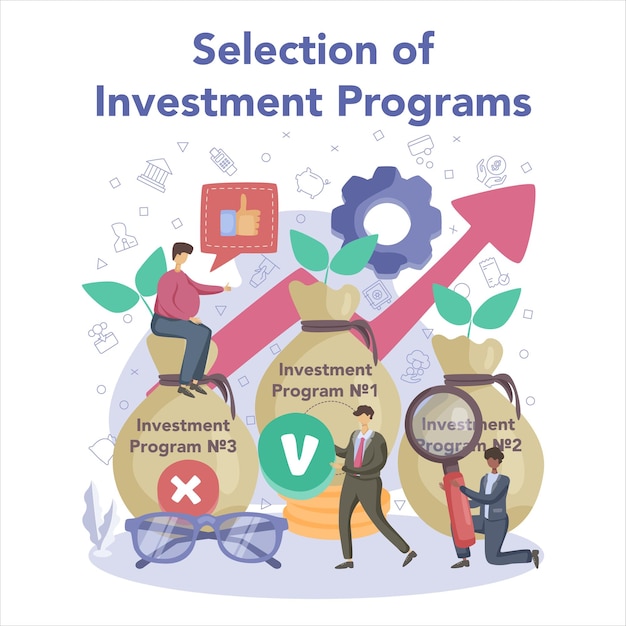
Unlock the Secrets of Dividend Growth Stocks and Harness Their Power for Your Investments.

All about Dividend Growth Stocks and How to Invest in Them
Can only a handful of people invest profitably in the stock market? Not really, that’s a common misconception. Understanding how to start and where to put your money in the stock market might seem tricky with countless options available. After digging deep into this subject for over three years, I’ve learned the substantial value of dividend stocks and growth stocks and I’d love to share some insights with you through real-life examples.
Skeptics often worry whether it’s too late to get started with dividend investing. Contrary to popular belief, it’s never too late to start building your stock portfolio and earning passive income, no matter your age!
Let me simplify investing for you. This article will mainly focus on dividend investing and dividend growth stocks and will give a practical example of how they can bring returns.
Companies give out dividends from their profits as a kind of ‘thank you’ to their shareholders. However, every company is different. Some might not pay dividends at all while others have to decide between investing the money back into the company or rewarding their investors. Typically, it’s the well-established and mature companies in sectors like utilities, oil and gas that pay high dividends.
The technology sector is one of the few areas where you’ll find fewer companies paying dividends because these businesses are constantly evolving and need to regularly reinvest profits to keep up.
So, who decides on dividend payouts and how are they done? This power lies mainly with the company’s board of directors. Dividends can come as either cash in your bank or as additional shares to your investment portfolio.
Another essential thing to consider is the amount of dividends paid out. This is often given as percentage – the dividend yield, which makes it easier for shareholders to determine their dividend payout. The payout ratio, the total dividends divided by the net income of the company, is another key indicator to keep track of. This can help assess whether the dividend yield is adequate to the company’s earnings growth rate.
One critical thing to keep in mind is that simply owning the company’s stock isn’t enough to receive dividends. Shareholders must buy the stock no later than the last business day before the “ex-dividend date”.
Apart from regular dividends, companies might sometimes give out special or non-recurring dividends. These are bonuses, often announced when the company has had a great run.
When thinking about stock investment strategies, you’ll find two main types: growth investing and dividend investing. Growth investing involves buying stocks of companies expected to have above-average earnings growth while dividend investing focuses on those companies sharing profits with the shareholders.
Each strategy has its advantages and disadvantages and aligns more towards different investor goals.
What’s cool about dividend growth stocks is that they are a blend of both worlds. These are the stocks that not only offer high dividends but also promise growth, benefiting you in two ways – dividend payments and price appreciation over time.
When we talk about dividend stocks, a term that often comes up is ‘Dividend Aristocrats’. These are the cream of the crop, companies that have not only been consistently paying and increasing dividends for the past 25+ years but also offer twice the average dividend yield of the S&P500.
Leggett & Platt (ticker: LEG), a company that operates in the field of innovative design and manufacturing, offers a clear example of how dividend stocks can yield returns. In 2022, despite a 20.17% drop in the S&P500 index due to various market concerns, Leggett & Platt managed to limit this decline thanks to dividend payments, illustrating the resilience and returns possible when investing in Dividend Aristocrats.
So, how can you get started?
First, I’d recommend browsing the Dividend Aristocrats list and arbitrarily selecting a company to do a similar analysis to what I did for Leggett & Platt.
Second, familiarize yourself with the company’s technical and important data like earnings per share, dividend yield, beta, and market capitalization.
Lastly, consider opening a practice account to get a feel for how navigating the stock market works, risk-free.
FAQs Section
1. Do dividend stocks increase in price?
Dividend growth stocks generally follow the market more closely and offer returns similar to the market.
2. What are the best dividend growth stocks to buy in 2023?
Check out the Dividend Aristocrats list for some of the best choices.
3. Are Dividend Growth Stocks ETFs profitable?
Yes, they can suit investors looking for a wide selection of stocks, lower risk, and don’t mind slightly lower returns.
4. Can you live entirely on dividends?
It depends on your lifestyle needs. If your lifestyle needs $3000 a month, your dividend portfolio should generate a minimum of $36000 per year. Assuming your dividend yield is 10%, then you need to invest $360000 in the portfolio.
Below are some Investment platforms to help get you started:
1. Public: Offers commission-free trades of stocks and ETFs, option to buy and sell 25+ different cryptocurrencies, access to alternative investments, high-yield treasuries accounts, user-friendly interface.
2. Moomoo: Offers free trades of stocks, ETFs, options, and ADRs, advanced screening and charting tools, free real-time level 2 data, easy-to-use mobile app, AI monitoring, AI-powered price forecasts, free investing courses.
3. Webull: Offers free trades of stocks, ETFs, options, and cryptocurrency, ability to buy fractional shares, extended trading hours, advanced reporting tools, schedule recurring investments, 24/7 customer service.


